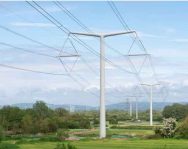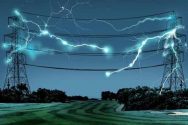
U.S. Electrical Grid Needs Off-Grid Energy
To say that the United States electrical grid is outdated would be an understatement. Built largely during the first half of the 20th century, the grid has struggled to keep up with the explosion of electrical demand and technological advancements. It’s a patchwork system, plagued by inefficiencies, that was not designed for the diverse energy needs of the 21st century.
The electrical grid’s limitations aren’t just a theoretical problem; they have real-world implications. Extreme weather events, which are increasing in frequency due to climate change, pose significant risks. The recent Texas energy crisis, where a winter storm left millions without power, is a glaring example. Natural disasters like hurricanes and wildfires also highlight how easily large sections of the grid can be knocked out, leaving communities without essential services for days or even weeks.
The centralized nature of the U.S. grid further compounds these issues. The existing structure often creates monopolistic scenarios where a single provider controls a regional grid, limiting competition and innovation. This affects not just pricing but also the motivation to transition to cleaner, more sustainable forms of energy. The end result is an inertia that is hard to overcome.
Off-Grid: A Viable Alternative
One promising way to address these myriad issues is through the adoption of off-grid energy solutions. Off-grid systems, often based on renewable energy sources like solar and wind, are modular by design, meaning they can be scaled up or down as needed. This provides a unique flexibility that the traditional grid simply cannot offer.
Local Energy Production
One of the most significant advantages of going off-grid is the potential for local energy production. Communities can produce their own electricity, thereby reducing the distance that electricity has to travel. This not only minimizes transmission losses but also reduces the vulnerability to centralized grid failures.
Decentralization and Competition
By encouraging off-grid solutions, we move towards a more decentralized energy model. This fosters competition and allows communities to tailor their energy systems to their specific needs, whether that be cost-efficiency, sustainability, or resilience.
Environmental Benefits
Incorporating off-grid energy solutions like solar panels and wind turbines can also significantly reduce greenhouse gas emissions. By shifting away from fossil fuel-based electricity, off-grid systems offer an environmentally friendly alternative that aligns with global sustainability goals.
Legislative Reform: The Case for a New Category of “Local Energy Producer”
Given the clear advantages of off-grid systems, there’s an urgent need for legislative action. One such change could be modeled on the UK’s Electricity Act of 1989. A new category, “Local Energy Producer,” should be introduced, granting off-grid solutions a formal standing within the regulatory framework. This could involve tax incentives, grants, or subsidized loans to encourage local communities to invest in off-grid energy solutions.
The limitations and vulnerabilities of the U.S. electrical grid are not insurmountable problems; they are challenges that present an opportunity for transformative change. Off-grid energy is not …













